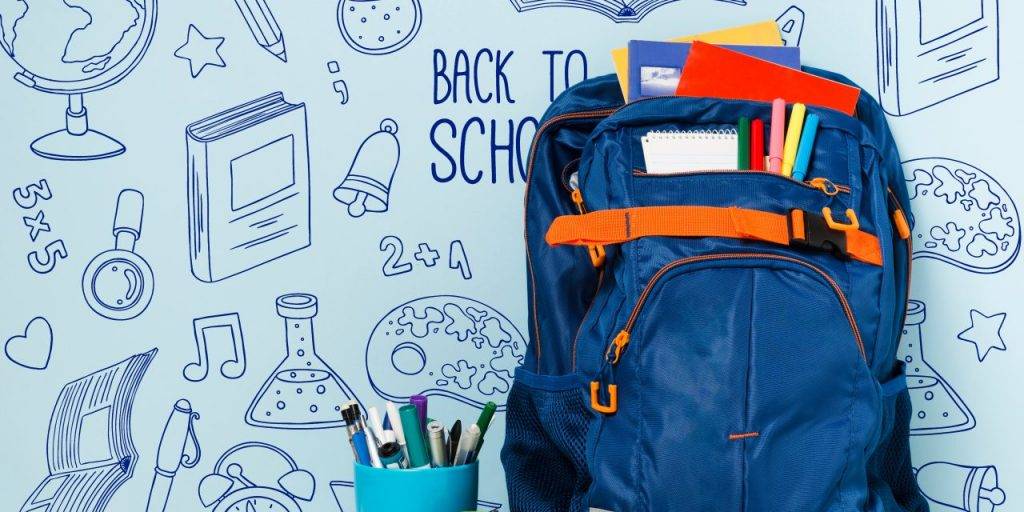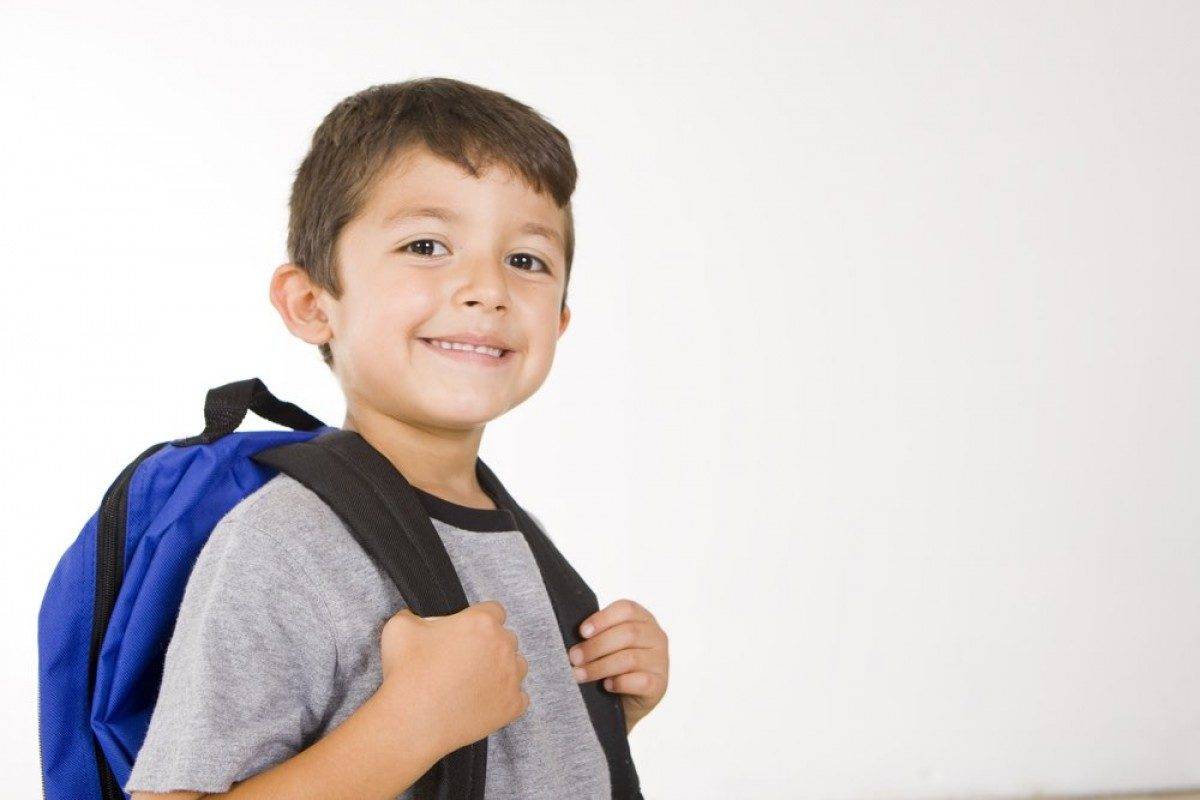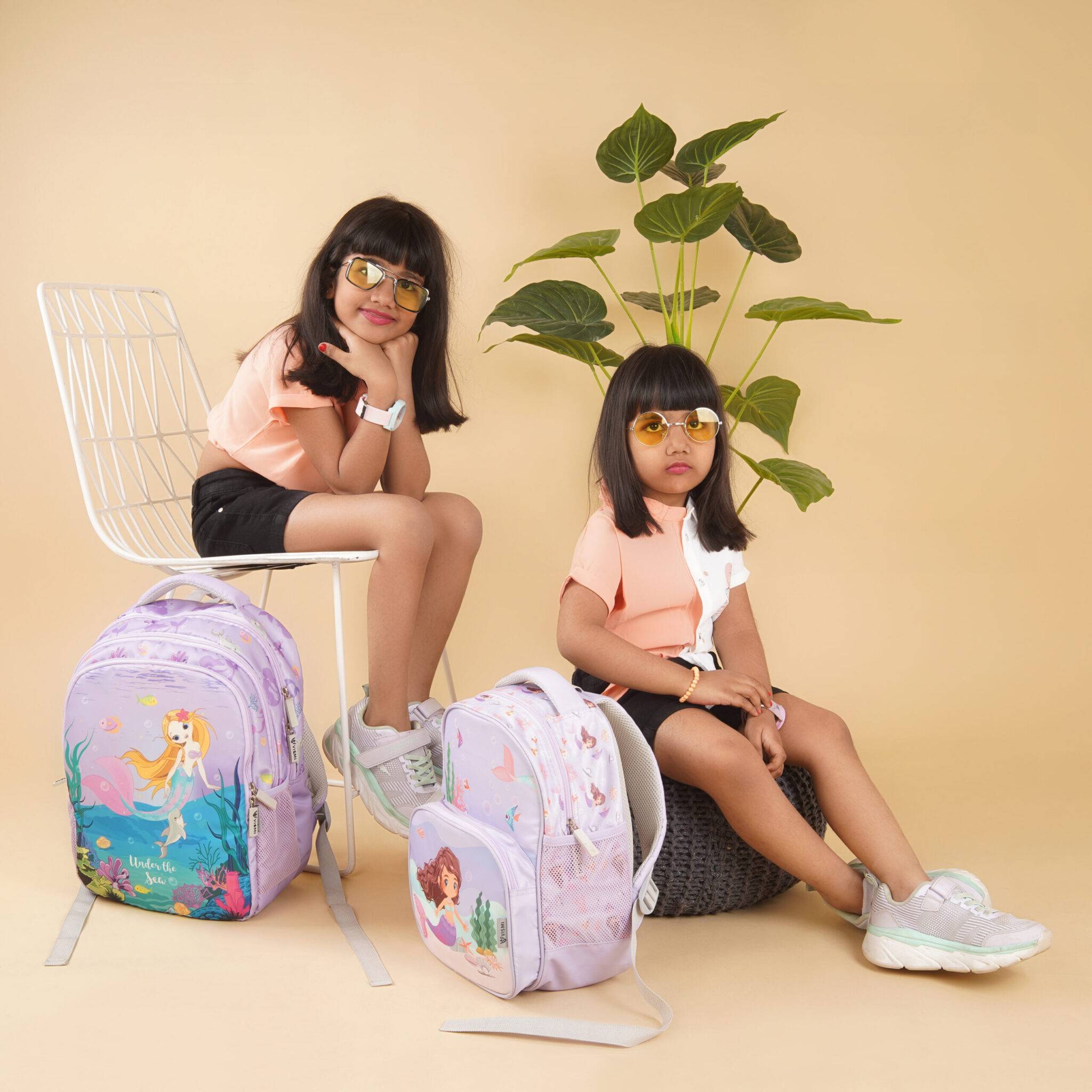Table of Contents
Finding the ideal school bag for your child isn’t an easy task. It’s a choice that will affect your child’s comfort, safety, and overall school experience.
Knowing the many sorts of school bags and their distinct characteristics is critical, with so many choices available on the market today. Each type, from the classic backpack to the fashionable messenger bag, has its benefits and drawbacks.
In this post, we at Omega Pediatrics will dig into the world of school bags, examining the merits of each type and giving tips to help you decide. We will provide you with a guide on choosing your child’s school bag that blends function and style.

Types of School Bags for Your Child
Choosing the best school bag for your child is important for their comfort, organization, and overall school experience. With many options available, diving deep into the details of each type and its distinct qualities demands greater analysis and attention.
Backpacks
Backpacks are a classic and practical choice for students of all ages. Thanks to the two shoulder straps, they distribute weight evenly to the shoulders when worn. They also have plenty of storage space for books, notes, and other school stuff.
Look for backpacks with padded shoulder straps and a cushioned back panel to provide maximum comfort and support. Other than this, a backpack has many compartments and pockets to aid with the organization of things, eliminating clutter while allowing simple access.
Backpacks are available in various sizes, styles, and materials, allowing you to choose the best match for your child’s needs and personal taste.
Messenger Bags
Messenger bags have gained popularity recently due to their trendy and casual appeal. They offer a stylish alternative to traditional backpacks, featuring a single shoulder strap worn across the body.
Messenger bags typically have a flap closure and a spacious main compartment, making them suitable for carrying books, notebooks, and laptops. Typically, they’re the choice among older students or those with lighter loads.
Use messenger bags with adjustable straps and interior pockets to keep belongings secure and organized. They come in various materials, including canvas, leather, and nylon, allowing you to find one that suits your child’s taste.
Trolleys
Ideal for students with heavy loads or those who struggle with carrying backpacks. Rolling bags or trolleys provide a convenient solution. These bags have wheels and a retractable handle, allowing children to pull them instead of bearing the weight on their backs.
Rolling bags are spacious and durable, often featuring multiple compartments for easy organization. They are particularly useful for students transporting laptops or other bulky items.
When choosing a rolling bag, consider the size and quality of the wheels, the durability of the handle, and the overall sturdiness of the body.
Tote Bags
Tote bags are diverse solutions that combine functionality and design. They are usually huge, open-top designs with robust handles, allowing quick access to your stuff. With a huge top opening, you can readily see the contents of the bag at a glance.
Tote bags are ideal for transporting books, notes, and small goods such as stationery or water bottles. And they may have inner pockets or compartments to organize your child’s things.
Tote bags are made from various materials—canvas, cotton, and nylon—and are available in various colors and patterns to suit diverse tastes. These are popular among students who want a hassle-free carrying alternative due to their spaciousness and accessibility.

Factors to Consider in Choosing the Right School Bag
Choosing the best school bag for your child matters! It affects their comfort, safety, and general well-being. A well-chosen bag not only makes it easier to transport books and supplies but also encourages good posture and decreases the chance of strain or injury.
With so many alternatives, there are numerous factors to consider. Make sure you make a good choice.
1. School Guidelines
Check if your child’s school has specific guidelines or restrictions regarding bag size, color, or style. Ensure your child’s bag complies with the regulations.
2. Size and Weight
Select an appropriately sized bag for your child’s age, needs, and body build. It should comfortably hold their books and supplies without being too large or small. Your child should also be able to carry the bag throughout the day.
3. Durability and Water-Resistance
Choose a bag made of sturdy materials with reinforced stitching and strong zippers to withstand the wear and tear of daily use, ensuring it lasts the entire school year.
You may also consider getting a bag with water-resistant or waterproof material to protect your child’s belongings from rain or accidental spills, preventing damage to books and electronics.
4. Style and Design
Involve your child in decision-making by selecting a bag that conforms to their style or favorite colors, fostering a sense of ownership and enthusiasm for using the bag.
Also, consider a bag with multiple compartments and pockets to help your child stay organized, making it easier to find and access their belongings throughout the day.
Consider the size and shape of the bag compartments to ensure they can accommodate your child’s specific belongings, such as laptops or lunch boxes, without causing them to be crumpled, squished, or damaged.
Check for sturdy and comfortable handles that won’t dig into your child’s palms if they occasionally carry the bag by hand.
5. Safety Features
Look for bags with reflectorized strips or patches, especially if your child walks to or from school, to enhance their visibility in low-light conditions and promote safety.
Also, ensure the bag has a secure closure mechanism, such as reliable zippers or sturdy buckles, that allows your child to open and close independently.
6. Comfortability
Consider a bag with breathable materials or mesh panels in the back area to provide ventilation. This promotes airflow and prevents excessive sweating, enhancing your child’s comfort during long hours of carrying the bag.
Also, consider bags with adjustable straps that can be customized to fit your child’s height and body shape, allowing for a comfortable and secure fit.
7. Maintenance
Choose a bag that’s easy to clean and maintain, preferably with materials that can be wiped clean or machine-washed. This saves you time and effort in keeping the school bag tidy.
8. Special Features
Consider bags with extra features. For example, you may look for bags with built-in spine protection features, such as padded back panels and ergonomic designs, to promote proper spinal alignment and reduce the risk of back pain.
9. Warranty and Customer Reviews
Research the brand’s reputation, customer reviews, and any available warranty or return policies to ensure you invest in your child’s high-quality and reliable school bag.
10. Price
Set a budget and compare prices from different retailers to find a bag that meets your requirements without overspending, considering the bag’s quality and features.

Is Your Child’s Backpack a Potential Health Hazard?
Backpacks are appropriate for students, but improper use or ill-fitting designs can pose potential health hazards. Here are some features that may affect a child’s health when selecting a backpack:
We can ensure that our children’s backpacks promote their overall well-being and minimize the risk of musculoskeletal issues and discomfort by considering certain factors.
Body Strains and Posture Problems
The weight of a backpack is a critical factor to consider. Heavy backpacks can strain a child’s back, shoulders, and neck, leading to pain and postural problems.
Opt for backpacks that are lightweight and distribute weight evenly. Look for ergonomic designs, including padded shoulder straps and back panels, to provide proper support and promote good posture.
Proper sizing and fit are essential to avoid potential health risks. An ill-fitting backpack can lead to discomfort and muscle imbalances. Choose a backpack proportionate to your child’s body size and adjustable to achieve a snug and comfortable fit.
Multiple compartments are important to distribute weight evenly and prevent excessive items from shifting, reducing strain and facilitating easy access to belongings.
Carrying Style and Bag Placement
Encourage your child to wear the backpack’s carrying straps on both shoulders rather than slinging it over one shoulder. This ensures an even distribution of weight and prevents muscle strain.
Additionally, educate them about wearing the backpack at the correct height, with the bottom near the lower back and the top not extending past the shoulders. Proper bag placement further minimizes strain on the back and shoulders.
Bacterial Buildup and Sweating
Regularly cleaning your child’s school bag is important to prevent bacteria buildup due to rugged handling and sweating. It also inhibits the growth of molds and allergens. Choose a backpack that’s easy to clean and maintain, can be easily wiped, and is water- and mold-repellant.
Choose backpacks that have breathable materials or mesh panels in the back area. This allows proper ventilation and airflow, which inhibits sweat buildup and discomfort. Besides, mesh panels repel mud and dirt, making the surface easy to clean.
Lastly, opt for backpacks with a design that avoids excessive dangling straps or accessories that could pose tripping hazards or get caught on objects, promoting safe usage.

Get Your Child a Bag that Suits their Academic Needs
Choosing the best school bag for your child is an important decision. Their daily bag may significantly influence their comfort, organization, and overall school experience.
You may choose the best match for your child’s needs and personal style by evaluating the numerous types of school bags available, such as backpacks, messenger bags, trolleys, tote bags, and more, as well as each type’s features.
A well-chosen school bag will help your child with their daily routine and contribute to his general health and happiness throughout the school year.
We at Omega Pediatrics are your perfect ally in your parenting journey. We would be glad to help you make an informed choice for your child’s school bag. After all, we always want the best for our children, and this includes their school experience.
FAQ
What are the different types of school bags available for children?
There are various types of school bags, including backpacks, messenger bags, trolleys, and tote bags. Each type has its own features and benefits, catering to different needs and preferences.
What factors should I consider when choosing the right school bag for my child?
When choosing a school bag, consider factors such as size and weight, durability and water-resistance, style and design, safety features, comfortability, maintenance, special features, warranty and customer reviews, and price.
How can I ensure my child’s backpack doesn’t pose a health hazard?
To minimize potential health risks associated with backpacks, ensure proper sizing and fit, encourage wearing both shoulder straps, distribute weight evenly, clean the bag regularly, choose breathable materials, and avoid excessive dangling straps or accessories.
Why is it important to involve my child in the decision-making process when choosing a school bag?
Involving your child in choosing their school bag fosters a sense of ownership and enthusiasm for using the bag. It allows them to express their style preferences and ensures they feel comfortable carrying and using the bag.
How can Omega Pediatrics help me choose the best school bag for my child?
Omega Pediatrics can provide guidance and support in selecting the right school bag for your child. Our team understands the importance of choosing a bag that promotes comfort, organization, and overall well-being, and we’re here to help you make an informed decision.



